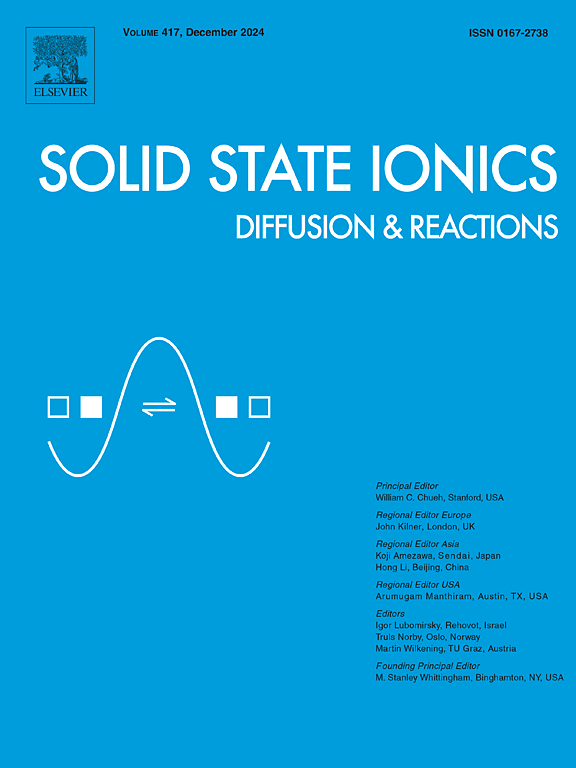采用渗透技术设计CO2和H2O共电解高活性电极
IF 3.3
4区 材料科学
Q3 CHEMISTRY, PHYSICAL
引用次数: 0
摘要
有效利用二氧化碳排放进行能源储存和化学合成是实现可持续发展的关键。本研究的重点是提高固体氧化物电解电池(SOECs)的性能,以实现CO2和H2O的中温共电解产生合成气。采用一种新颖的渗透技术将纳米级二元氧化物催化剂(包括镧系、过渡金属氧化物和碱土金属氧化物)引入选定的支架电极中。其中,氧化铈(CeO2)与电位La(Sr)Fe(Mn)O3 (LSFM)钙钛矿电极材料配对后,电解电流密度和电催化活性均有显著提高。值得注意的是,由于CeO2的浸润,电解电流密度(>;60%)可以实现特殊的法拉第效率,与非浸润电池相比。所观察到的性能增强可归因于内阻降低、微结构连通性改善和活性表面积增加。然而,控制合成气产物仍然是一个挑战,主要是由于水气转换反应的强烈影响,在所有测试细胞中都倾向于产生H₂。尽管存在这些限制,但研究结果强调了ce -氧化物渗透剂作为推进CO2/H2O共电解应用的高活性催化剂的巨大潜力。本文章由计算机程序翻译,如有差异,请以英文原文为准。
Designing highly active electrode by infiltration technique for co-electrolysis of CO2 and H2O
The efficient utilization of CO2 emissions for energy storage and chemical synthesis is critical to achieving sustainable development. This study focuses on enhancing the performance of solid oxide electrolysis cells (SOECs) for intermediate-temperature co-electrolysis of CO2 and H2O to produce syngas. A novel infiltration technique was employed to introduce nanoscale binary-oxide catalysts, including lanthanide, transition, and alkaline earth metal oxides, into selected scaffold electrodes. Among these catalysts, cerium oxide (CeO2) exhibited significant improvements in electrolysis current density and electrocatalytic activity when paring with the potential La(Sr)Fe(Mn)O3 (LSFM) perovskite electrode material. Notably, due to the infiltration of CeO2, a marked enhancement in electrolysis current density (> 60 %) can be achieved with exceptional Faradaic efficiency, in comparison to the non-infiltrated cell. The observed performance enhancement can be attributed to reduced internal resistances, improved microstructural connectivity, and increased active surface area. However, controlling the syngas product remains a challenge, with a bias toward H₂ production in all tested cells, primarily due to the strong influence of the water-gas shift reaction. Despite this limitation, the findings underscore the significant potential of Ce-oxide infiltrants as highly active catalysts for advancing CO2/H2O co-electrolysis applications.
求助全文
通过发布文献求助,成功后即可免费获取论文全文。
去求助
来源期刊

Solid State Ionics
物理-物理:凝聚态物理
CiteScore
6.10
自引率
3.10%
发文量
152
审稿时长
58 days
期刊介绍:
This interdisciplinary journal is devoted to the physics, chemistry and materials science of diffusion, mass transport, and reactivity of solids. The major part of each issue is devoted to articles on:
(i) physics and chemistry of defects in solids;
(ii) reactions in and on solids, e.g. intercalation, corrosion, oxidation, sintering;
(iii) ion transport measurements, mechanisms and theory;
(iv) solid state electrochemistry;
(v) ionically-electronically mixed conducting solids.
Related technological applications are also included, provided their characteristics are interpreted in terms of the basic solid state properties.
Review papers and relevant symposium proceedings are welcome.
 求助内容:
求助内容: 应助结果提醒方式:
应助结果提醒方式:


